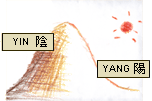According to Robert J. Vallerand's Dualistic Model of Passion, passion has two main flavors: harmonious and obsessive.
Those with harmonious passion engage in their work because it brings them intrinsic joy. They have a sense of control of their work, and their work is in harmony with their other activities in life. At the same time, they know when to disengage, and are better at turning off the work switch when they wish to enjoy other activities or when further engagement becomes too risky. As a result, their work doesn't conflict with the other areas of their lives.
Obsessive passion is a different story. Like those with harmonious passion, those with obsessive passion perceive their work as representing a passion for them, and view their work as highly valued. A major difference is that they have an uncontrollable urge to engage in their work. As a result, they report feeling more conflict between their passion and the other activities in their life.
Both forms of passion are associated with very different outcomes. Harmonious passion is associated with higher levels of physical health, psychological well-being, self-reported self-esteem, positive emotions, creativity, concentration, flow, work satisfaction, and increased congruence with other areas of one's life. These effects spill over into other areas. Because people with harmonious passion can actively disengage from work and experience other parts of their lives, they report general positive affect over time.
In contrast, those with obsessive passion display higher levels of negative affect over time and display more maladaptive behaviors. They report higher levels of negative affect during and after activity engagement; they can hardly ever stop thinking about their work, and they get quite frustrated when they are prevented from working. They also persist when it's risky to do so (just like a pathological gambler). A reason for this is that their work forms a very large part of their self-concept. To protect their selves, they display more self-protective behaviors, such as aggression,especially when their identity is threatened. Those with obsessive passion also have a more negative image of themselves, being quicker to pair the word "unpleasant" with "self" than those showing lower levels of obsessive passion. This suggests that their persistence doesn't come from a place of intrinsic joy, but an unstable ego.




 The Waterfall model is a sequential design process used in software development, with the development life cycle of Conception, Initiation, Analysis, Design, Construction, Testing, Implementation, and Maintenance progressing steadily downwards, just like a waterfall flows down. Completion of one stage leads to another, and each stage has its separate goals. It owes its origin to the standard workflow process in the construction and manufacturing industries.
The Waterfall model is a sequential design process used in software development, with the development life cycle of Conception, Initiation, Analysis, Design, Construction, Testing, Implementation, and Maintenance progressing steadily downwards, just like a waterfall flows down. Completion of one stage leads to another, and each stage has its separate goals. It owes its origin to the standard workflow process in the construction and manufacturing industries. Agile software development bases itself on an iterative and incremental approach. Software developers work on small modules, and respond to users' changed requirements rather than follow a specific or predetermined plan of action. The basic design is simple, and changes are made as work progresses.
Agile software development bases itself on an iterative and incremental approach. Software developers work on small modules, and respond to users' changed requirements rather than follow a specific or predetermined plan of action. The basic design is simple, and changes are made as work progresses.